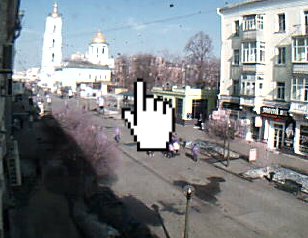Ukrainian national traditions – are the embodiment of folk’s character in everyday life, rules following a person from birth to death and being passed from ancestors to grandsons for more than several hundreds or even thousands years. Which are these attributes of Ukrainian character? First of all they are – benevolence, hospitality, amiability. Besides that – respect to women, ancestors, memory of gone ancestry; tenderness, love for children, nature, and animals. Sense of humor, artistry and melodiousness of Ukrainians have been famous all over the world, as well as their talent for creating artworks which have decorated Ukrainians’ homes since the beginning of time – embroidery, thread, weaving, painting and pottery. Ukraine is traditionally a Christian country, although nowadays church is separated from the State. Most religious people in Ukraine are Christians: Orthodox, Catholic, (Greek-Catholic and Roman-Catholic), Protestants. Also in small amounts there are Jews, Muslims, Buddhists and others.
Ukrainian culture’s origins are rooted deeply in the past. This is proved by numerous memorials of ancient civilizations which used to exist on the territory of Ukraine. In the times of Kiev Rus Byzantine and Varangian influence were noticeable, however ancient Russian culture managed to save its originality. The most ancient memorials of Ukrainian epos are dated from the first centuries A. D., written literature began to form approximately in the IX century. At the same time the first castles and cathedrals from stone were built. Their preciosity impressed Arabian, Byzantine and European contemporaries greatly.
Structure and proportions of cathedrals in Kiev Rus are distinctive and have no direct analogues in Byzantium. Their towers are up elongated, on the roughcast walls there are many frescos and mosaics having specific colour-grade. In the XVI—XVII cc. Revival Style was widespread in Ukraine.
The most bright impact was made on the architecture of Lvov. Baroque art and architecture, the top of creative achievements in Eastern and Western Europe, were highly praised in Ukraine in the XVII c. Upon the project of the architect Rastrelli Andreevskaya Church and Marian Castle have been built in this manner in Kiev.
Since the XVIII c. classicism comes to Ukraine, much less churches are being built; the preference is given to castles and public buildings. In the second half of the XIX c. new types of buildings appeared – multistoried commercial apartment buildings, stations, banks, plants. Gardens and estates disappear; new materials (reinforced concrete) and equipment are being implemented, buildings are being formed in Roman, Gothic and Revival styles.


